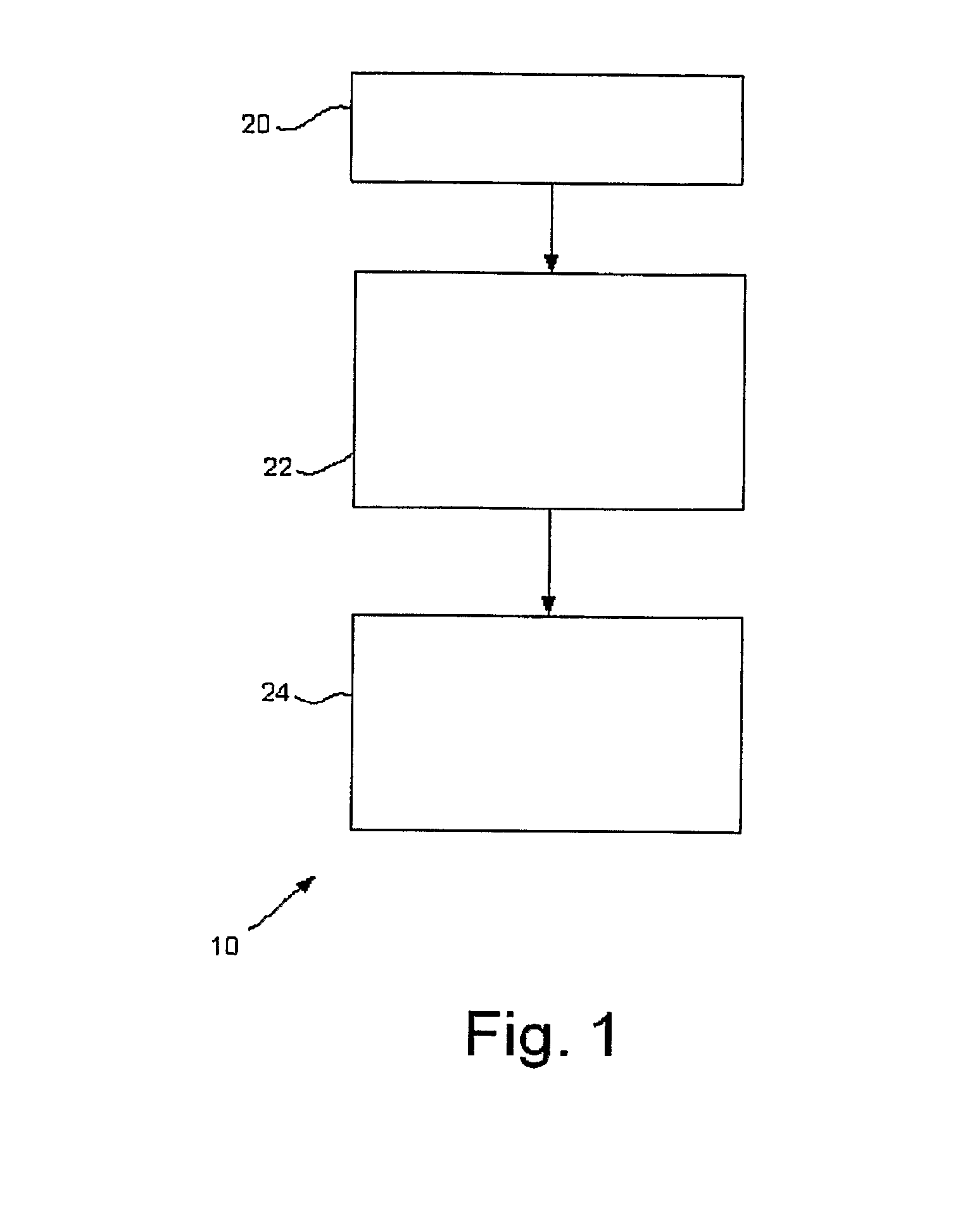Microreactor Glass Diaphragm Sensors
a technology of glass diaphragm and micro-reactor, which is applied in the direction of fluid pressure measurement, instruments, transportation and packaging, etc., can solve the problems of difficult formation of complex structures and change of operating pressur
- Summary
- Abstract
- Description
- Claims
- Application Information
AI Technical Summary
Benefits of technology
Problems solved by technology
Method used
Image
Examples
Embodiment Construction
[0023]Reference will now be made in detail to the present preferred embodiment(s) of the invention, examples of which are illustrated in the accompanying drawings. Whenever possible, the same reference numerals will be used throughout the drawings to refer to the same or like parts. One embodiment of a method of the present invention is shown in FIG. 1, and is designated by the reference numeral 10. The method 10 illustrated in FIG. 1 constitutes the basic steps of an embodiment of a method for producing an integrated pressure sensor in a glass-frit based microfluidic device.
[0024]The method includes step 20, providing a flexible glass, glass-ceramic or ceramic membrane. Glass may be preferred for its transparency, but transparency is not a requirement. Strength and a degree of flexibility are more important. The method also includes step 22, forming microfluidic wall structures defining at least one chamber or passage in which pressure is to be sensed, the wall structures comprisin...
PUM
| Property | Measurement | Unit |
|---|---|---|
| thicknesses | aaaaa | aaaaa |
| thicknesses | aaaaa | aaaaa |
| thicknesses | aaaaa | aaaaa |
Abstract
Description
Claims
Application Information
 Login to View More
Login to View More - R&D
- Intellectual Property
- Life Sciences
- Materials
- Tech Scout
- Unparalleled Data Quality
- Higher Quality Content
- 60% Fewer Hallucinations
Browse by: Latest US Patents, China's latest patents, Technical Efficacy Thesaurus, Application Domain, Technology Topic, Popular Technical Reports.
© 2025 PatSnap. All rights reserved.Legal|Privacy policy|Modern Slavery Act Transparency Statement|Sitemap|About US| Contact US: help@patsnap.com



